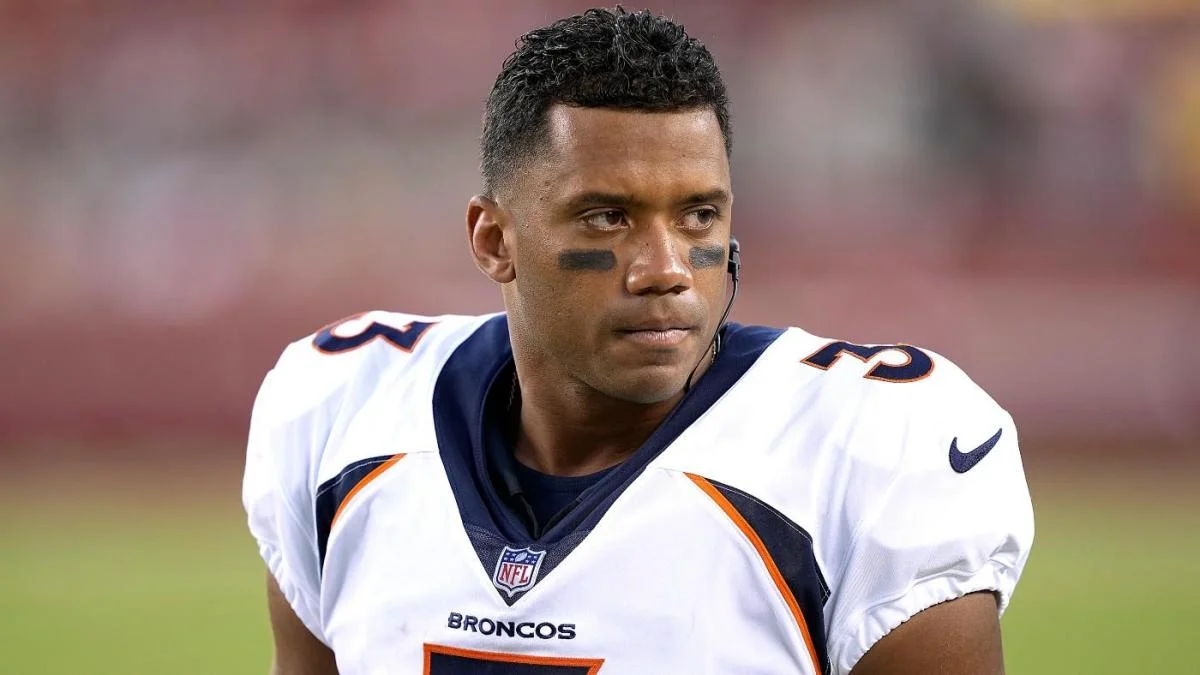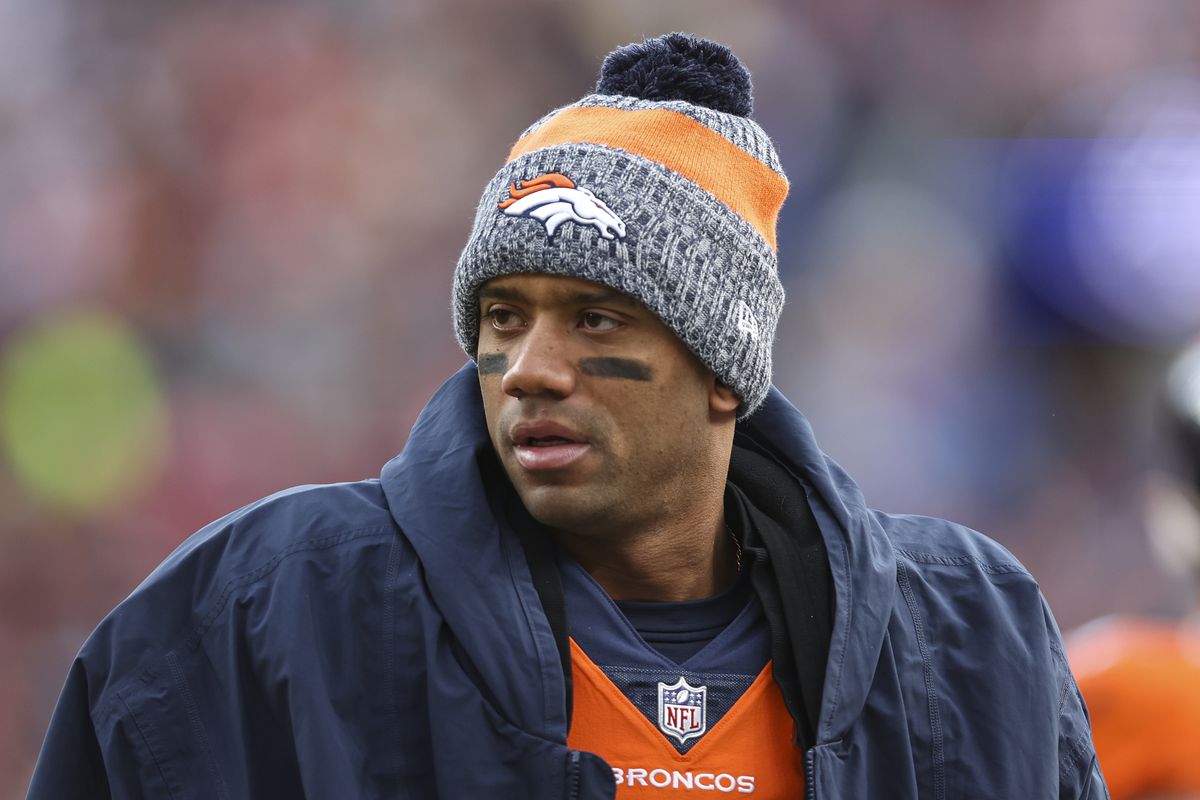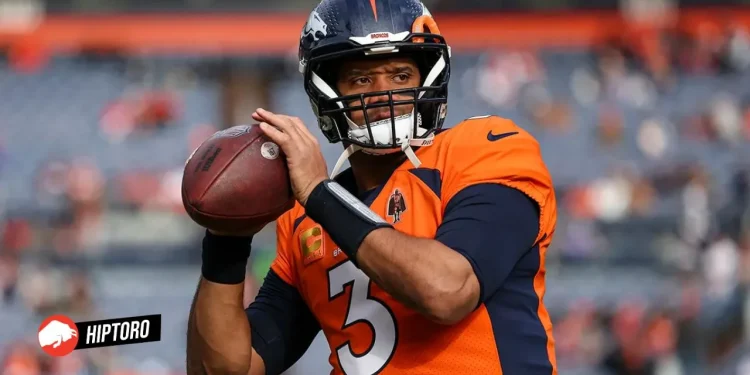When the Denver Broncos announced the acquisition of Russell Wilson, the air in Mile High City was electric with anticipation. Here was a quarterback of Super Bowl pedigree, a player expected to be the cornerstone of the franchise’s resurgence.
George Paton, the architect behind this grand move, was lauded for securing a talent of Wilson’s caliber, a quarterback whose battle cry, “Broncos Country, Let’s Ride,” promised to usher in a new era of success for the Denver Broncos.
However, the narrative took a drastic turn, leading to an outcome no one in Denver could have anticipated. Despite the Broncos’ financial commitment of approximately $38 million to Wilson’s salary for 2024, the partnership was short-lived.
In a move that shocked fans and analysts alike, Wilson and the Broncos parted ways, with the quarterback finding a new home with the Pittsburgh Steelers for a modest sum just over the league minimum.
This development not only marks a significant chapter in Wilson’s career but also raises serious questions about the decision-making process within the Broncos’ management. The decision to let Wilson walk, coupled with the substantial financial implication of his departure, casts a long shadow over General Manager George Paton’s tenure.

Sean Paton, Russell Wilson Gamble Backfires Spectacularly
The scenario surrounding Wilson’s release and subsequent signing with the Steelers reveals a miscalculation that could be deemed a blunder of significant proportions. Paton’s gamble on Wilson, characterized by optimism and a hefty financial outlay, failed to yield the desired results.
The narrative that unfolded is one of missed opportunities and a partnership that never fully materialized into the success story it was envisioned to be.
Sean Paton’s strategy, including the controversial hiring and firing of Nathaniel Hackett and the failed courtship of Aaron Rodgers, further complicates the picture. Hackett’s tenure, aimed at luring Rodgers to Denver, ended prematurely, leaving the team in an awkward position with Wilson.
The subsequent hiring of Sean Payton, who seemingly had reservations about Wilson, underscores the disjointed strategy and lack of coherent vision within the Broncos’ management.
Russell Wilson bout to have a single solid pre season performance and tweet something like “Steel got it”
Then proceed to be a bum the rest of 2024. pic.twitter.com/2htZqtAfOe
— Dan Mitchell (@realdanmitchell) March 12, 2024
Denver Broncos Face Leadership Crisis After Russell Wilson’s Departure
The departure of Russell Wilson from Denver is more than just a player moving on; it’s a glaring indicator of the challenges facing the Broncos’ leadership. Paton’s role in this saga, from the high-stakes trade to the eventual release of Wilson, invites scrutiny of his decision-making and the overall direction of the franchise.
The statement by Paton that the “door remains open” for Wilson, even as he departs, feels like a consolation, a vague attempt to salvage some positive narrative from a situation that has largely been perceived as mismanagement.
As the Broncos navigate the aftermath of Wilson’s exit, the focus shifts to rebuilding and redefining the team’s identity. The task ahead for Denver is daunting but not insurmountable. It requires a clear vision, strategic planning, and perhaps most importantly, a willingness to learn from the missteps that characterized the Wilson era.

The saga of Russell Wilson’s time with the Broncos will be remembered as a turbulent chapter in the team’s history. It serves as a cautionary tale about the complexities of managing an NFL franchise and the unpredictable nature of football. For the Broncos, the path forward is uncertain, but it offers an opportunity to redefine their future, with or without George Paton at the helm.
In the annals of the Denver Broncos’ storied history, the Russell Wilson saga will stand out as a moment of reflection, a period of what could have been and what ultimately was. As the team moves forward, the lessons learned from this chapter will be crucial in shaping the Broncos’ destiny.

Source: Marca









